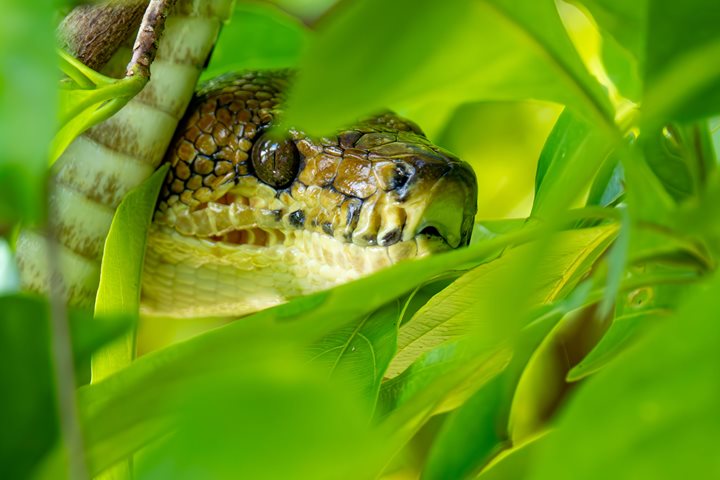Today was an action-packed day aboard National Geographic Quest, the first full day of our expedition along the Pacific Coast of Costa Rica and Panama. After boarding the ship in Puerto Caldera yesterday, we navigated over 100 nautical miles during the night. We landed at Playa Caletas near Drake Bay. This was our first landing of the trip, and excitement was in the air as waves broke on the sandy beach.
After brushing sand off our feet, team members changed into more rugged footwear for a variety of treks along muddy paths into the tropical rainforest.
One of the first animals we observed was a northern anteater, also called the northern tamandua, as it climbed into the tops of a palm tree near the beach. These animals feed almost exclusively on insects. The tamandua, like other anteaters, has no teeth but relies on a long tongue with sticky saliva to feed on insects. Normally nocturnal, tamanduas are often found in treetops. They are solitary animals.
Shortly after, we observed a scarlet macaw, one of our planet’s most colorful birds. Macaws are some of the largest members of the parrot group with wingspans of nearly three feet. The scarlet macaw can live up to 75 years and mates for life.
After that, we began hiking through the forest and observed a large, conspicuous bird with an oversized bill. After searching for a good vantage point, we found an opening in the forest to see through the dense foliage and identified the bird as a yellow-throated toucan. Its bill, when compared to the size of its body, is one of the world’s largest. We learned that the bill is too soft to use for digging or fighting and is part of the bird’s heat exchange system. Toucans use their massive beaks to rapidly radiate heat away from their bodies, allowing them to cool down. We also learned that their tongues can be almost six inches long, and that there are over 40 species of toucans worldwide.
Just when we thought we couldn’t get any luckier, we saw a group of six spider monkeys swinging from vine to vine, high in the dense forest canopy. These agile primates have disproportionately long limbs and long prehensile tails which make them excellent climbers. They primarily eat fruits, flowers, and insects, but we observed them foraging on leaves. The groups are very social and have up to 30 individuals.
Finally, right before reaching the landing, we spotted a howler monkey in the distance and a group of about 15 white-faced capuchin monkeys. These primates are highly social. They live in groups of 16 individuals on average with females comprising about three quarters of each group. On average, females give birth to offspring every 27 months even though they mate throughout the year. Both male and female capuchins exhibit different dominance behaviors within the group, which we observed during this excellent sighting.
During lunch on the ship, we enjoyed local dishes and a scenic cruise along the coast. We traveled to our afternoon destination, Corcovado National Park, where we enjoyed another set of hikes into the rainforest. Most of the groups experienced heavy rain, which is typical in these lowland coastal forests. After the rain cleared, we headed back to the ship and begun navigating south along the coast to points beyond.
It was an amazing day with very productive wildlife sightings. What a great introduction to the complexity and high levels of biodiversity in the tropical rainforest.









